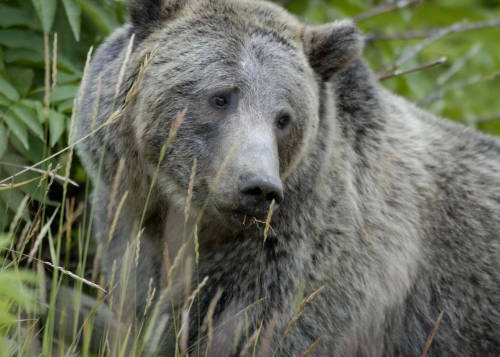Right now grizzly bears where I live in southwest Montana are starting to prepare for winter. Whether they’ll survive that long, and what the future will look like for them if they do, remains to be seen. Despite record numbers of grizzly bear deaths in the Greater Yellowstone region, Wyoming and Idaho are still hoping to move forward with planned trophy hunts this fall. The only thing standing between grizzly bears and trophy hunting is a court order requiring the states to hold off on the hunts until it can be decided if endangered species protections should be restored to these majestic animals. Grizzly bears are among the slowest reproducing animals. Removing endangered species protections prematurely, as well as allowing trophy hunts to move forward, will push them back toward extinction and reverse decades of recovery progress.
The situation demonstrates what happens when wildlife are left to the mercy of devastating political ties. It reaffirms the importance of the Endangered Species Act. Unfortunately, it’s also a harbinger of what Sec. Zinke’s Department of the Interior envisions for the future of imperiled wildlife with new changes aimed at gutting the Endangered Species Act to make way for extractive industries that want to drill, mine, and log in important wildlife habitat.
The Endangered Species Act was a direct response to a dramatic increase and disturbing trend of extinctions that occurred in the 1960s and 1970s. New research since then shows that we may even be in the midst of a sixth mass-extinction event. At its heart, the Act exists to prevent additional species from going the way of the dodo bird and to help at-risk species recover. Like the Clean Air Act and the Clean Water Act, the safeguards of the Endangered Species Act are fundamental to the health and well-being of our communities -- both human and wild. A look back in time to before its existence makes clear the need for checks on industry power and human persecution of wildlife, particularly native carnivores.
Yet with new proposed rules, Sec. Zinke seems determined to take the country back to an era when the wishes of industry trumped those of the public at large and concern for future generations is nonexistent. In a nutshell, the proposed rules:
-
Strip “threatened” species listed in the future of automatic protections offered to “endangered” species;
-
Create impediments to listing species and designating critical habitat, including removing language requiring decision makers to look only at science, not economics, when deciding whether to list a species; and
-
Undermine the requirement that agencies consult with wildlife experts to ensure federal actions do not harm listed species or critical habitat.
Taken together, these proposed rules undermine the very bedrock of the Endangered Species Act and the key to its incredible success. The Endangered Species Act is our nation’s most effective law for protecting wildlife in danger of extinction. Ninety-nine percent of species listed under the Act have survived, and many are on the path to recovery.
The Endangered Species Act is a law of last resort, a safety net when all else fails to save a species. To weaken this net by allowing profit, not science, to drive decisions is both foolhardy and shortsighted. You have only until Sept. 24 to submit a comment telling the Department of the Interior to drop these dangerous plans. Take action today!
